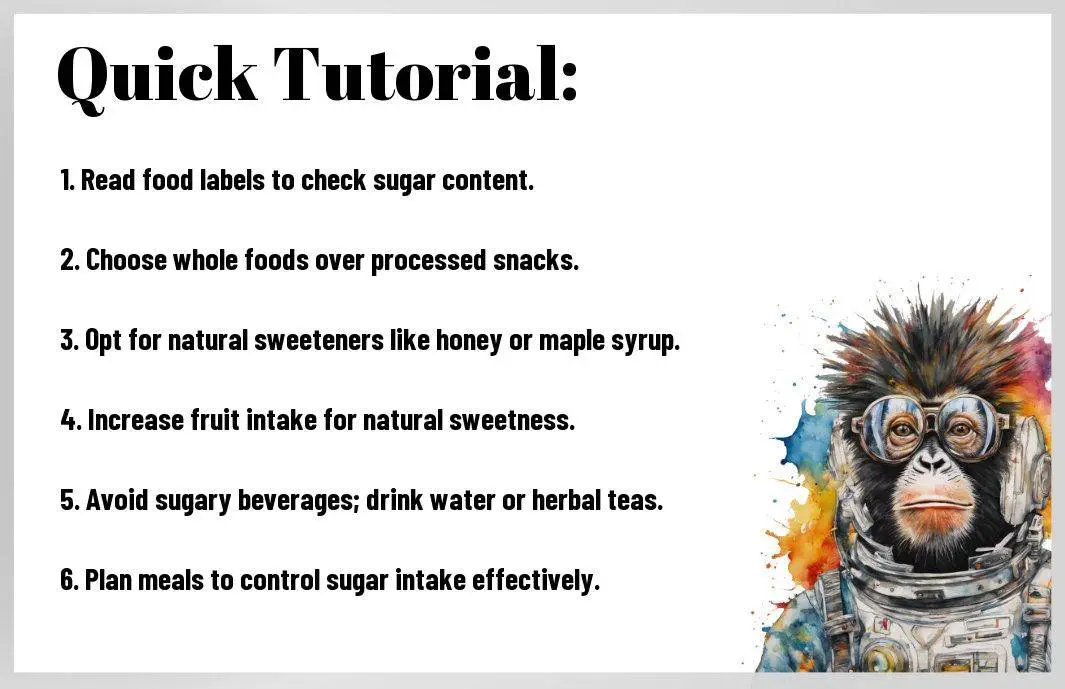How Can You Effectively Limit Added Sugars In Your Nutrition And Healthy Diets?
Inundated with options, you may find it challenging to navigate the myriad of food choices laden with added sugars. Reducing your sugar intake is vital for enhancing your overall health and promoting a balanced diet. By understanding how to identify hidden sugars and making informed choices, you can take control of your nutrition. In this guide, you’ll discover practical strategies and tips that will help you effectively limit added sugars, ensuring your dietary habits align with your health goals.
Understanding Added Sugars
For anyone seeking a healthier diet, comprehending added sugars is important. These sugars, often found in processed foods and sweetened beverages, contribute significantly to your daily caloric intake without providing important nutrients. Recognizing where added sugars lurk can empower you to make better nutritional choices, ultimately benefiting your overall health and wellness.
Definitions and Sources
Definitions of added sugars refer to those sugars that are incorporated into foods and beverages during processing or preparation. Common sources include sodas, candies, pastries, and certain sauces. By identifying and avoiding these sources, you can effectively take control of your sugar intake and make healthier choices.
Health Impacts of Excess Sugar Intake
Assuming you consume more added sugars than recommended, you may face various health risks. High sugar intake is linked to obesity, type 2 diabetes, and heart disease, among other conditions. These risks can significantly impact your long-term well-being.
Understanding how excess sugar impacts your health is vital for making informed choices. High levels of added sugars can lead to weight gain, increased fat storage, and metabolic dysfunction, which negatively affect your body’s ability to regulate insulin. This cycle can ultimately raise your risk of developing chronic diseases. Additionally, consuming too much sugar can contribute to poor oral health, inflammation, and a decreased ability to manage stress, affecting both your physical and emotional well-being. By limiting added sugars, you can take proactive steps toward a healthier lifestyle.

Assessing Your Current Sugar Intake
Any effective strategy to reduce added sugars begins with assessing your current sugar intake. Start by keeping a food diary for a week, tracking everything you eat and drink. This practice will help you identify where sugar sneaks into your meals and snacks, enabling you to make informed changes. With this assessment, you’ll gain a clearer understanding of your consumption patterns, guiding you toward a healthier, low-sugar lifestyle.
Reading Nutrition Labels
Intake a moment to examine nutrition labels, as they provide vital insights into the sugar content of products. Look for the total sugars listed, which includes both natural and added sugars. It’s particularly important to notice the serving size, as many packaged foods contain multiple servings. By making this a habit, you can more easily choose options lower in added sugars and become a more informed consumer.
Identifying Hidden Sugars
Little do many people know that sugars can frequently be hidden in unexpected places within their diets. Items often perceived as healthy, such as flavored yogurts, sauces, or even bread, can contain high levels of added sugars. You might be surprised to find that common ingredients like corn syrup, agave nectar, and various fruit concentrates contribute to your daily intake without you realizing it.
Another strategy for lowering your sugar intake is to identify these hidden sources in processed foods. Familiarize yourself with various names for sugars found on ingredient labels, such as fructose or sucrose. A comprehensive understanding of these hidden sugars allows you to make more informed choices when selecting groceries, empowering you to steer clear of unnecessary sugar and move towards a healthier diet.
Strategies to Limit Added Sugars
Many effective strategies exist to help you limit added sugars in your diet. Start by reading food labels to identify hidden sugars in products that may seem healthy. Aim to prepare more meals at home, allowing you to control the ingredients. Additionally, gradually reduce your sugar intake to make the transition easier. Incorporating these strategies will not only help you cut back on added sugars but also improve your overall nutrition.
Choosing Whole Foods
If you focus on choosing whole foods, you can significantly reduce your added sugar intake. Whole foods, such as fruits, vegetables, whole grains, and lean proteins, typically contain lower amounts of sugar and higher nutritional value compared to processed foods. By filling your plate with these natural options, you create a balanced diet that naturally curbs your sugar cravings.
Healthier Alternatives to Sugary Staples
Whole foods provide a perfect foundation for healthier alternatives to sugary staples. Instead of reaching for sugary snacks or beverages, consider options like fresh fruit, which satisfies your sweet tooth while offering nutrients and fiber. When craving something sweet, opt for yogurt topped with berries over sugary desserts. By substituting high-sugar snacks with wholesome choices, you’ll nourish your body and maintain your energy levels without the added sugars.
Foods like nuts, seeds, and unsweetened applesauce can serve as fantastic replacements for sugary staples in your diet. For example, instead of sugary cereals, you can enjoy oatmeal topped with fresh fruit and a sprinkle of cinnamon. Sweetening your baked goods with natural ingredients, like mashed bananas or honey in moderation, can also enhance flavors without relying on excessive added sugars. By integrating these healthier alternatives, you not only reduce sugar intake but also discover new, delicious flavors that nourish your body.
Meal Planning for Low Sugar Diets
Your meal planning should focus on whole foods that are naturally low in added sugars. By incorporating a variety of fruits, vegetables, whole grains, lean proteins, and healthy fats, you can create satisfying meals that help you maintain your low-sugar lifestyle. Aim for diversity in your meals to keep them interesting and ensure you’re getting a wide range of nutrients while naturally minimizing added sugars.
Incorporating Natural Sweeteners
Incorporating natural sweeteners into your diet can provide sweetness without the high glycemic impact of refined sugars. Options like honey, maple syrup, and stevia can be used in moderation to enhance the flavor of your meals and snacks. Look for recipes that utilize these natural alternatives and still satisfy your sweet tooth without compromising your health goals.
Balanced Meal Creation
For balanced meal creation, focus on combining macronutrients to sustain energy and fullness. This means including a source of protein, healthy fats, and complex carbohydrates in each meal. This balance not only reduces cravings for sugary snacks but also keeps your blood sugar levels stable throughout the day.
For instance, a well-balanced meal might consist of grilled chicken, quinoa, and a side of roasted vegetables drizzled with olive oil. This combination provides protein from the chicken, complex carbohydrates from quinoa, and healthy fats from the olive oil, ensuring you feel satiated. When meals are balanced, the likelihood of reaching for added sugars diminishes, allowing you to maintain your low sugar goals with ease.
Staying Motivated and Accountable
Keep your commitment strong by surrounding yourself with a supportive community. Engage with friends or family members who share similar health goals, as this connection can provide encouragement and accountability. You can also join online forums or local groups focused on nutrition, where you can celebrate each other’s successes and share tips for limiting added sugars in your diet.
Setting Realistic Goals
Accountable goals pave your path to success. Instead of aiming for drastic reductions in sugar intake overnight, consider setting small, achievable targets. For example, you might start by cutting out sugary drinks or limiting dessert to once a week. This approach will help you build sustainable habits that last.
Tracking Progress
Progress becomes tangible when you log your achievements. Keeping a food diary or using an app can help you monitor your sugar intake and recognize patterns in your eating habits. This practice not only highlights improvements but also shows areas where you may need to adjust your strategies.
The act of tracking your progress allows you to see how far you’ve come, reinforcing your motivation. Over time, you’ll gain insights into your habits and identify triggers that lead to excessive sugar consumption. This awareness will empower you to make informed choices, ensuring your journey towards a healthier diet is as effective and rewarding as possible.
To wrap up
On the whole, effectively limiting added sugars in your nutrition involves adopting mindful eating habits, reading labels carefully, and choosing whole, unprocessed foods whenever possible. Focus on incorporating natural sweeteners and fruits to satisfy your cravings without excess sugar intake. Gradually reducing sugary beverages and snacks, along with planning your meals, will help you create a balanced and healthier diet. By making these conscious choices, you empower yourself to take control of your sugar consumption and improve your overall well-being.
